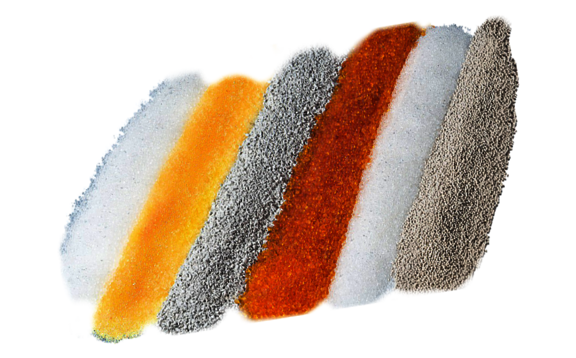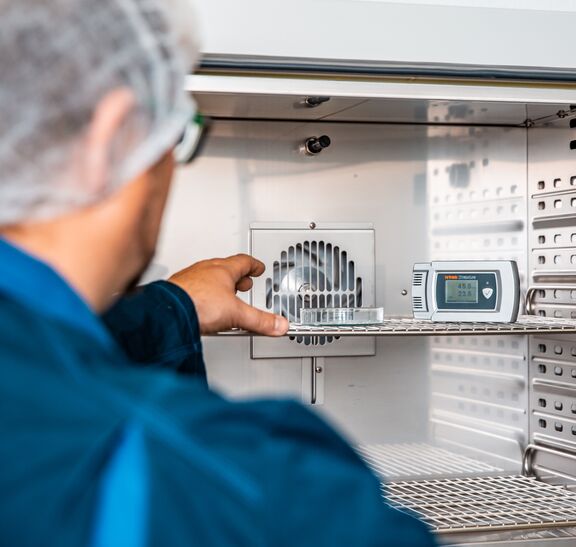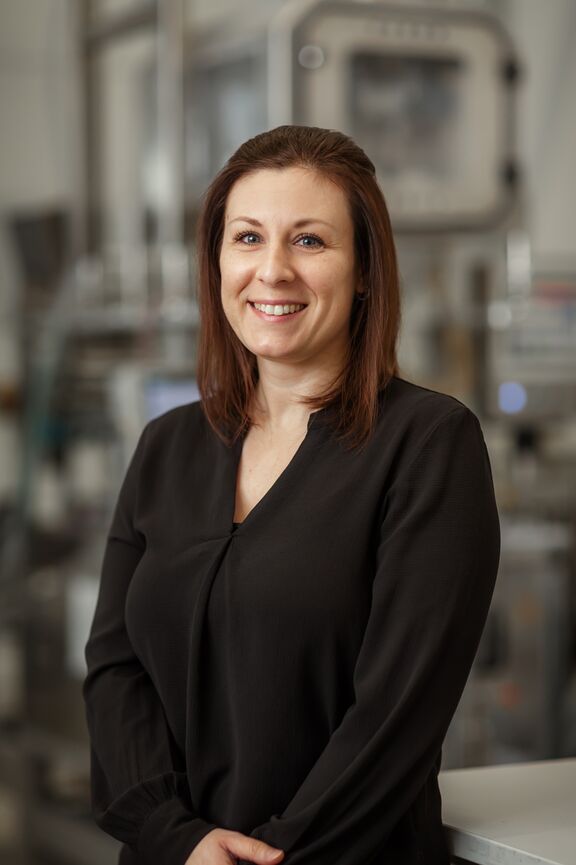Desiccants as loose/bulk goods
Our highly activated desiccants come in various forms, including bulk. Be it silica gel, molecular sieves, Rubingel, orange gel, Envirogel or clay, all desiccants are also available as bulk goods in various packaging sizes – from small 1-kg tins, to barrels and drums, to big bags.
TROPACK desiccants use physical forces to integrate moisture into their structures, which consist of layers, pores and channels. Desiccants are not water-soluble. Desiccants with special properties and different shapes and grain sizes can be tailored to your specific purpose.
Silica gel / White gel
Silica gel is an amorphous and porous form of silicon dioxide that is widely used as a desiccant to adsorb moisture. This silicon dioxide has a very high SiO2 content, and is produced through a controlled chemical reaction between sodium silicate and sulphuric acid.
Silica gel does not form any vapour, is completely odourless, and does not corrode metals.
Our silica gel is FREE from dimethyl fumarate DMF test report (PDF /German)
Microporous silica gel
Microporous white silica gel is used as “standard silica gel” to sharp-dry air. The large inner surface with the tiniest pores can adsorb up to approx. 36% of its own weight in moisture.
At 23°C and 40% RH (test conditions as per DIN 55473), silica gel adsorbs approx. 25% of its own weight.
Its high adsorption capacity means silica gel is commonly used in places with limited space where maximum moisture needs to be adsorbed with minimal desiccant, and thus particularly in pharmaceutics, diagnostics and industry.
Forms and graining:
- Form: Granulate, beads or crushed beads
- Graining: 0.2 – 5 mm
Silica gels can be fully regenerated when heated to approx. 150°C.
Please contact us directly if you require further information on regenerating white silica gel.
Silica gel with indicator
White silica gel is also available with colour indicators. These indicator gels enable highly accurate visual checks of the desiccant’s saturation level. The change in the indicator’s colour tells users when the silica gel needs to be replaced.
Orange gel
- Colour change: From orange to white/transparent.
When in an active state loaded with approx. 6 weight percent of water, the silica gel is orange with increasing water adsorption it turns white. - Safe: Orange gel may be used in pharmaceutics, diagnostics and the food industry. It meets the requirements of the US Food and Drug Administration (FDA 21 CFR 177.1210, …).
- Form and graining: Orange gel is available as beads or a granulate gel, with graining ranging from 0.2 to 6 mm.
Rubingel
- Colour change: From red/ruby to yellow.
- When in an active state loaded with approx. 5 weight percent of water, it is ruby red; with increasing water adsorption, it turns yellow.
- Safe: Rubingel may be used in pharmaceutics, diagnostics and the food industry. It meets FDA requirements (21 CFR).
- Form and graining: Rubingel is available as beads with a graining of 1 to 3 mm.
Further information on Rubingel may be found at → TROPAgel® Rubingel
Envirogel
- Colour change: From orange to green.
- When in an active state loaded with approx. 12 weight percent of water, it is orange; with increasing water adsorption, it turns green
- Form and graining: Envirogel is available as beads with a graining of between 3 and 5 mm.
Silica gels with indicators can only be regenerated to a limited extent. If you require further information on regenerating indicator gels, please contact us directly.
Molecular sieves
Molecular sieves are zeolites that have been crafted into spheres, and which are distinguished by their pore diameters. They are commonly used as desiccants in lower relative humidity (under 50% RH).
Molecular sieves are used for sharp-drying in pharmaceutics, diagnostics, the food sector, and industries involving low temperatures or cold chains.
Depending on pore diameter and relative humidity, molecular sieves can adsorb up to approx. 27% of their own weight in water vapour (measured at 23°C and 40% RH, test conditions as per DIN 55473) . 4Å is used as the standard molecular sieve in most cases.
The pores’ precise size, measured in Ångström, enables not only moisture adsorption, but also targeted adsorption of additional molecules, such as oxygen or products of gas decomposition.
Types and graining:
- Types: 3Å, 4Å, 5Å, 10Å/13X
- Graining: 0,5 – 5mm
Clay
Clay is a natural mineral product used to adsorb moisture; its most important component is montmorillonite (60-90% content). The bentonite’s colour varies between grey/dark grey and red.
Depending on quality, clay adsorbs between 16 and 20% of its own weight in moisture when in an active state (measured at 23°C and 40% relative humidity in accordance with DIN 55473).
Activated clay
Renewably activated aluminium oxide, with its high adsorption capacity and wear resistance, is ideal for drying air and gas.
Activated clay comes in drums or big bags, and is available in various qualities, with graining of 2-5 mm and 4-8 mm.
Clay can be fully regenerated if heated to approx. 150°C. Please contact us directly if you require further information on regenerating bentonite or activated clay.

Info
Consulting | Service | High availability
TROPACK provides desiccant bags, desiccant cartridges, desiccant capsules and aluminium-composite film for a wide range of applications.
Custom designs tailored to your specifications are also available. Contact us for advice:
Downloads (PDF)
Highly activated desiccants
German-made quality
High-quality desiccants provide guaranteed protection for your goods and equipment, preventing any unnecessary costs:
|
|
Too moist – too dry?
It’s all about the right desiccant
The quantity of desiccant required needs to be calculated precisely to ensure your equipment and goods are reliably protected against moisture damage. Important parameters such as volume, package/component density, and ambient atmospheric conditions are crucial when it comes to optimally protecting your running machinery, transportation project and/or warehousing project.
Beware: If too much moisture is extracted as a result of using the wrong desiccant or an incorrectly calculated quantity of desiccant, this may lead to drying-induced damage.
That’s why proper advice from experienced desiccant specialists is crucial!
TROPACK – you can count on us
TROPACK products comply with the highest quality standards according to DIN 55473 (12/2015). Our desiccants meet the relevant requirements established by the European Union (e.g. EC 1935/2004) and the US Food & Drug Administration FDA (e.g. 21 CFR part 175/part 177).
TROPACK quality standards are regularly verified in the form of DIN 55473 and ISO 9001 certifications.That’s something industry, the retail market and consumers alike can count on. TROPACK desiccants are food-safe, contaminant-free, odourless and renewable. (We expressly refrain from using dimethyl fumarate (DMF)!)
We’ll be glad to answer any questions you may have!


